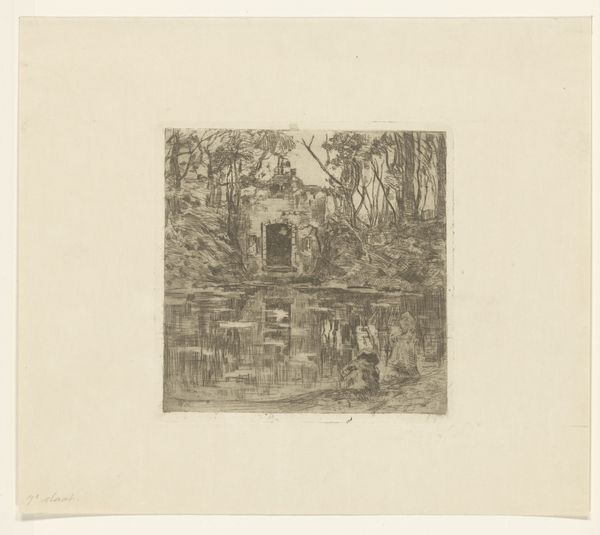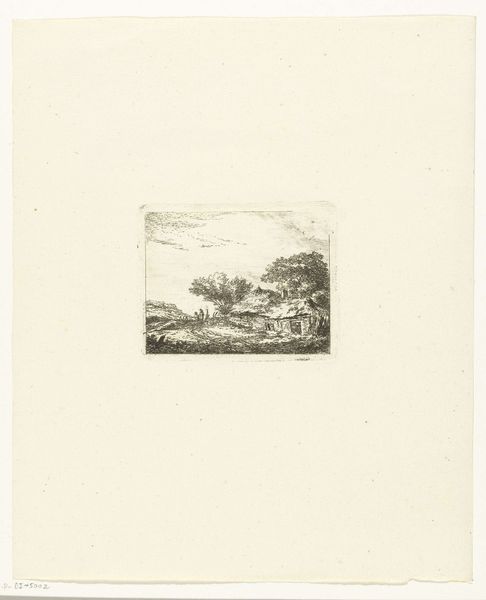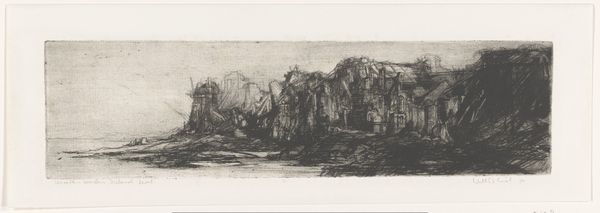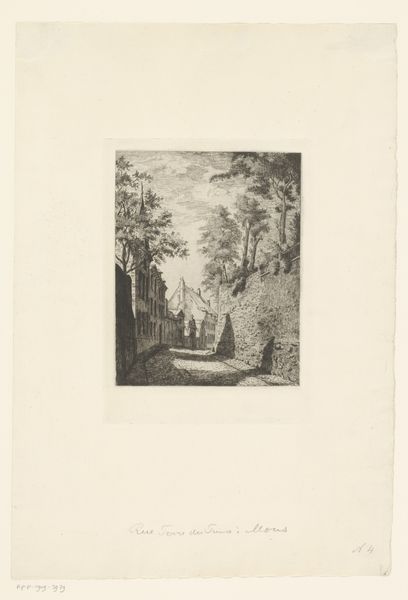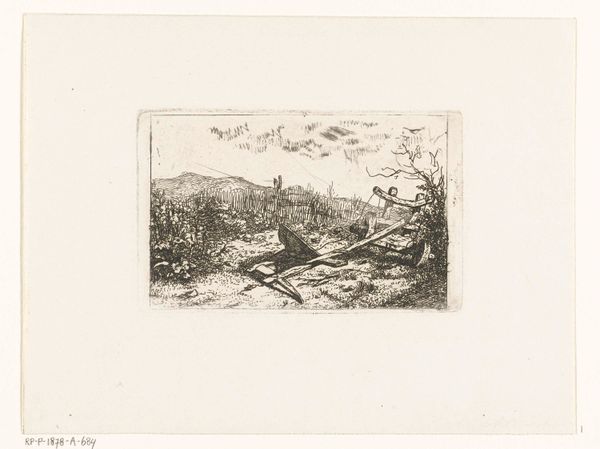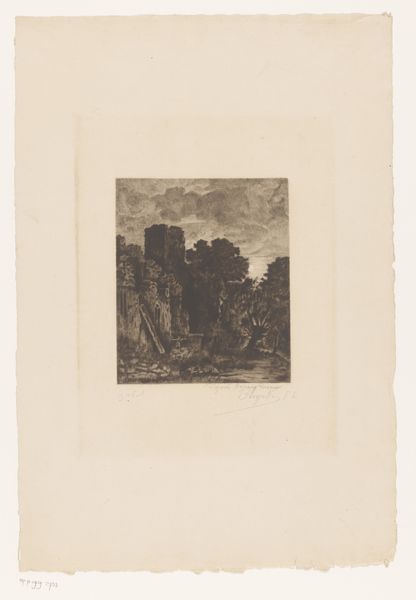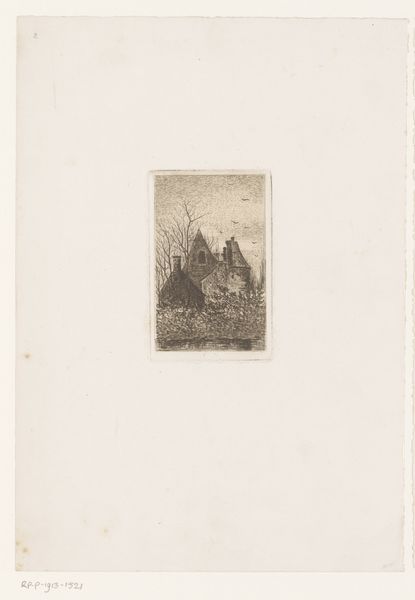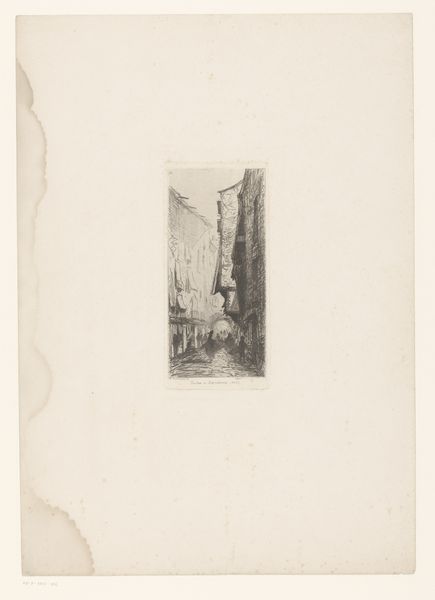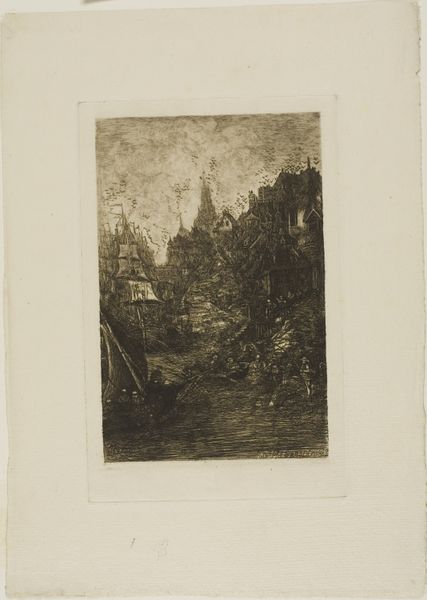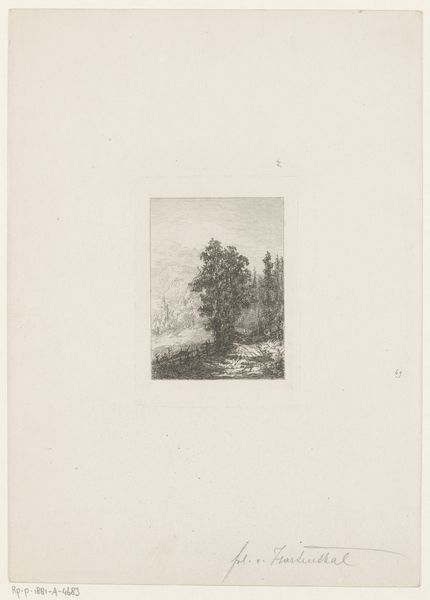
drawing, print, engraving
#
pencil drawn
#
drawing
#
amateur sketch
#
light pencil work
# print
#
pencil sketch
#
old engraving style
#
landscape
#
cityscape
#
pencil work
#
engraving
Dimensions: height 154 mm, width 107 mm
Copyright: Rijks Museum: Open Domain
Curator: Here we have "Achter het Vleeshuis, Maastricht," a print by Alexander Schaepkens, likely created sometime between 1830 and 1899. It resides here at the Rijksmuseum. Editor: Okay, my immediate feeling? It's got that dusty, almost dreamlike quality of old photographs. You can almost smell the history! I find the way the artist plays with light intriguing, very atmospheric. Curator: Indeed. Schaepkens situates us within the layers of urban history. Consider the position of the Vleeshuis, the meat market, historically a site of commerce but also of public power and control. Its positioning in the artwork can suggest many levels of meanings if you analyze the symbolism from the perspective of race, gender, and economy. Editor: Mmm, interesting take. I'm not getting a sense of political struggle. It's almost as if I’m stumbling upon a quiet street. The details – the brickwork, the shapes of the roofs – they pull me right in. Curator: It’s worthwhile to reflect on how such cityscapes contributed to the formulation of bourgeois identity in the 19th century. These scenes normalized particular perspectives, subtly defining who belonged and who was considered "out of place," often tied to class, gender, or even religious differences. Editor: Whoa. I dig how deep you're going. It feels really grounded now but still evokes a sense of…I guess, mystery. I am wondering, does that tower off in the distance represent anything important or is it just an aesthetic element to emphasize depth? Curator: Precisely! We can examine how the church’s prominence intersects with secular spaces of the market, hinting at ongoing power dynamics within Maastricht during this time. Who has access to the scene? What can be the social class, profession, gender identity of those that assisted or did not, to this particular moment of the city captured on paper. Editor: OK, my mind is officially expanded! Curator: Exactly! Art invites a multifaceted understanding if you allow it. Thank you! Editor: Right? My pleasure. Definitely feeling like I should rethink what I see on a first impression more often now.
Comments
No comments
Be the first to comment and join the conversation on the ultimate creative platform.
